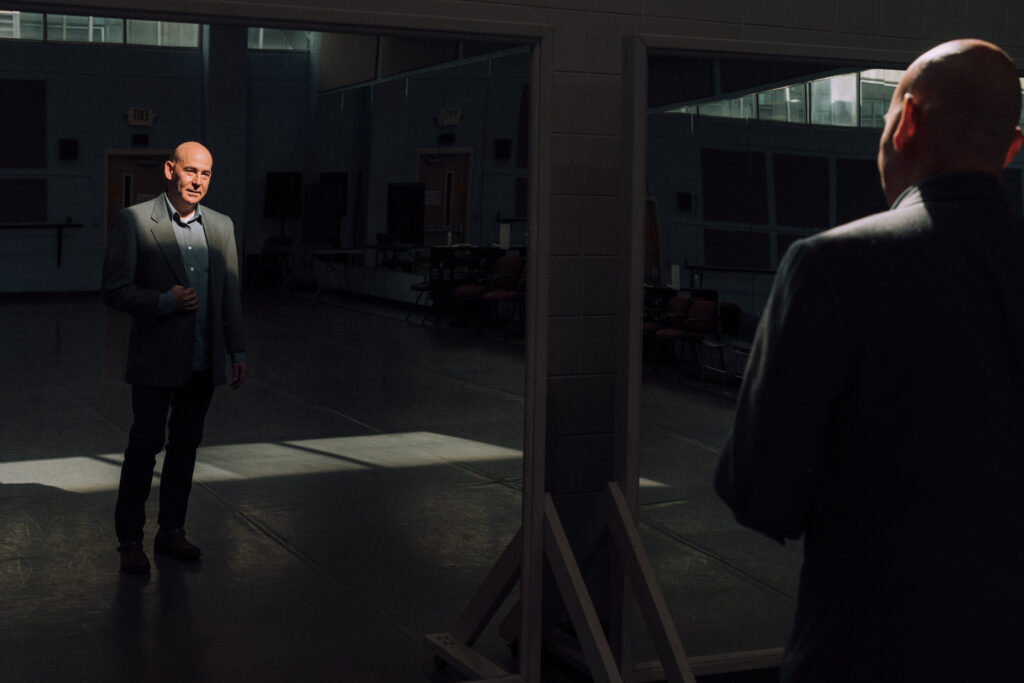
Wes Chapman’s role as the chair of the Department of Dance at the Alabama School of Fine Arts (ASFA) is a full-circle moment. He is an alum of the esteemed institution himself. After performing with Alabama Ballet for one season, Chapman was invited by Mikhail Baryshnikov to join American Ballet Theatre’s corps de ballet in 1984, climbing to the rank of principal in 1989.
In addition to performing with ABT, Chapman appeared with Bavarian National Ballet, Hamburg Ballet, English National Ballet, Teatro Colón in Buenos Aires, and Finnish National Ballet.
Chapman chatted with Dance Teacher from Costa Rica, where he was setting his production of The Nutcracker, to talk about his experience over the past eight years leading the next generation of dancers at his alma mater.
What do you enjoy most about your role at ASFA?
It’s a school that I graduated from in 1983. The school has evolved over the years and I really felt it was important that, besides modern and ballet, we continue to diversify our training for the students so that they have a broader view of what the dance world has to offer. A lot of that has to do with [subjects like] composition, improvisation, West African, and Afro-Caribbean dance [for example]; all areas of dance that a lot of ballet schools just don’t have time to cover. We don’t cover them fully, but we do have the opportunity to bring in people that are experts in the field. I really feel it’s made a big difference for our program because our dancers end up in some of the best university and conservatory programs in the country.
What do you feel is the biggest challenge facing dance educators today when teaching this current generation of students?
I think having the courage to say, ‘OK, I don’t know everything about dance, but I know to hire people who do know more than me in other areas.’ With ASFA’s diverse faculty, I turn to them to see what we need to do next to give our kids more diversity in their training while also maintaining ballet, modern, and contemporary. It’s really trying to find that balance that’s a challenge for all dance teachers.
What’s the best advice you’ve received as a dance educator?
One of my first teachers had come to see me dance with ABT at the Metropolitan Opera House in Theme and Variations. She said to me, ‘Wes, I want you to feel like you communicate to me personally as an audience member.’ I never really thought of how I was truly communicating through my dancing in the moment. When you’re young, your artistic side tends to develop as you become more mature. She said that at the right time for me.
I say exactly that same thing [with my students now]. I ask them, ‘What are you trying to communicate?’ Frequently, they don’t have an answer and that’s OK because I want them to have the opportunity to think about it, digest it, come back with questions, and give it a go during rehearsals.

Who has been your role model as a dance teacher?
I think Ruth Petrinovic is probably the most important role model and mentor. There is a big difference between teaching class and giving class. Often, it’s ‘Here’s the combination, ready, go’ instead of really having the insight of why you are doing a tendu, what is the energy pattern of a tendu, and why is it beneficial for what you are going to do next. She taught me how to teach class and that really made a big impact on me.
What is one unique thing that you like to incorporate in your classes when you are teaching?
The curriculum that we are using at ASFA is Revolutionary Principles of Movement (RPM). It is [focused] on physics and the way that dance actually works as opposed to what the eye sees. It was developed by Jo Anna Kneeland back in the 1960s and refined by Petrinovic. In RPM, there is something called therapeutic barre, which is the preparation for dance class. It’s meant to get the body prepared for a lot of the extreme movements we do in ballet. It is a series of seven-minute warm-ups to be done underneath your full range of motion; you aren’t trying to go to your full range first off. I [often] do that in lieu of pliés.
What is your advice for dance educators today?
I think there are a lot of challenges we as dance educators deal with when it comes to phones. It’s a double-edged sword. It’s an advantage if we can harness it to study Tamara Rojo doing fouettés in Don Quixote, but not if students are trying to make a TikTok video during barre. Distractions of 2023 are different than 1980.
Also, dance schools really need to evaluate what it is they are trying to do in terms of decolonizing the way we look at dance. It’s a big, hard subject. Trying to help our students get a well-rounded dance education is something we all need to look at. It’s a process for us as teachers to learn. We have to be open to improving our perspective on what dance is and what it requires of us. No ballet company just does ballet anymore.





